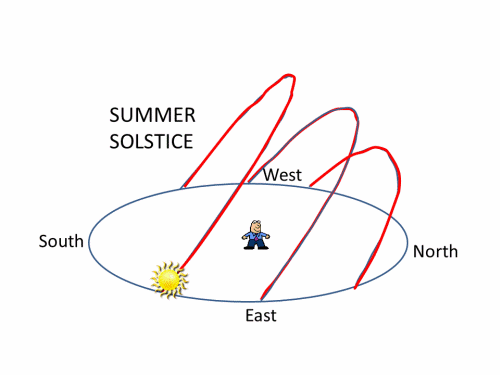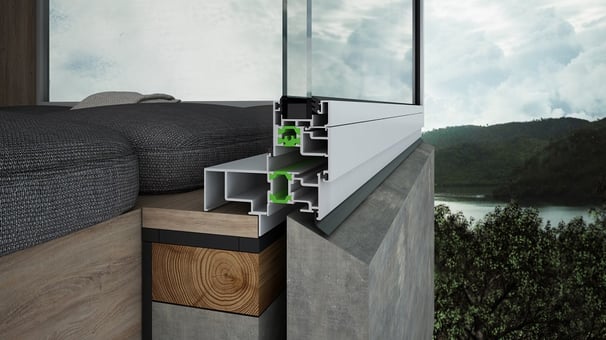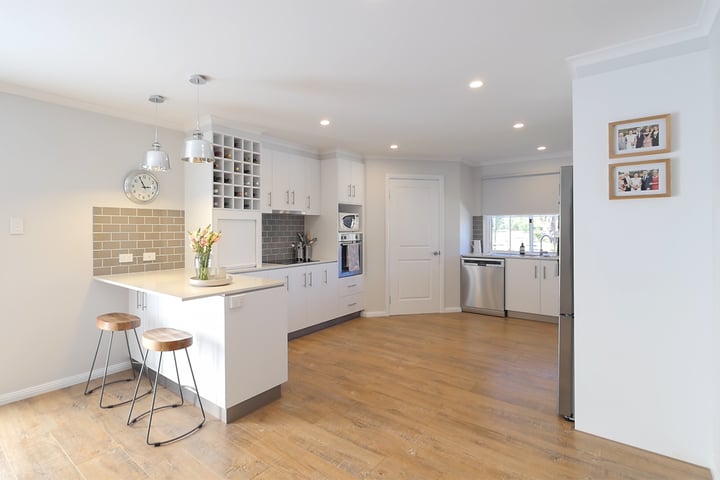6 WAYS TO INCREASE THE ENERGY EFFICIENCY OF YOUR MODULAR HOME
Getting the highest possible level of energy efficient is important for any home build - whether it's for a modular home or for a traditional on-site constructed house. Without adequate energy efficiency, you're going to be faced with high power bills, uncomfortably hot summers and unpleasantly cold winters.
So, we’ve looked at this issue in a bit of detail and come up with the top 6 ways you can increase the energy efficiency of your new modular home. Some are more complex ideas like passive heating and others are simple, like LED lights.
We recommend you have a read through this article, and even if you take one point, it will at least help a little!
SITUATE YOUR HOME IN THE RIGHT DIRECTION
Situating your new home on your site is incredibly important when you are looking to increase energy efficiency. By locating a modular house correctly and orientating it, you can improve the energy efficiency of your home dramatically. So, this first point is all about planning.
THE BASICS OF ORIENTATING YOUR MODULAR HOME CORRECTLY:
Passive Heating. This is the most energy efficient way of heating your home. What this means is that to heat your home passively you need to take advantage of the cheapest source of heat – the sun! Typically, in Australia, we require this heating in winter only.
So, you need to design and orientate your home to:
- Take advantage of winter sunlight and retain warmth.
- Blocks the heat of the summer sun and allows it to escape quickly without building up.
Passive Cooling: This is the opposite of passive heating. To passively cool your home, we need to cool the home by dissipating heat quickly and efficiently. When we do this, we are keeping the house cooler and reducing the need to rely on an artificial form of circulation or cooling.
Passive cooling works of the following principles:
- Dissipate heat quickly and efficiently by increasing airflow and minimising dead air pockets.
- Block the heat of the sun through shading and design.
UNDERSTANDING YOUR CLIMATE & THE TRAVEL OF THE SUN
Before we dig into orientating your home right, you need to do some investigation on the typical climate your site is going to experience and the travel of the sun over the site.

When trying to decide what the best orientation for your new home is there isnt really one right answer. However, as a rule, if you are trying to cool your home in hot and humid regions, we’d recommend you:
- Try to shade the house as much as possible on the western and northern sides
- Have the long walls facing the north and south orientation of your site.
- Minimise the amount of glazing on the western side of the home.
- Ensure your roofing is light coloured
- Ensure you have a well-ventilated roof space.
The second most important thing you can do to boost energy efficiency is to improve your windows. So often, we find that owners and builders will focus solely on increasing the insulation on the home and ignore the glazing of the house. Yes, improving the windows is not cheap by any means, but it will give you the most significant improvement to the energy efficiency of your home.
In hot climates like are found across most of QLD & Northern NSW, you will want to ensure that your windows are large enough to encourage proper ventilation and air movement. Conversely, you don’t want them so large that it becomes too expensive to improve the glass. Also, you will want to minimise the amount and size of the windows on the western side of your home.
WAYS TO IMPROVE YOUR WINDOWS
Improve the glass: By installing a treated glass such as Viridian Comfort Plus, you will be able to block some of the sun’s heat while not sacrificing on the amount of light and ventilation the windows provide. Check out the Viridian website here for more details.
Thermal breaks: Another great way to improve your windows is to look at installing windows in your home that have thermal breaks. So, this means that by breaking the heat or cold transfer from the exterior of the window, transfer of heat to the inside of the window is minimal. For example, on a hot day, the outside of an aluminium window heats up. Because aluminium transfers heat quickly, the inside of the frame heats up as well. Windows with thermal breaks such as AWS Thermal Heart Windows minimise this. Check out the AWS Thermal Heart windows website here for more information.

UPGRADE YOUR INSULATION
Ok, so a simple one here. Upgrading your insulation is a cost-effective way of boosting your homes energy efficiency. The most important thing to understand with wall insulation is the ‘R’ value.
WHAT DOES R-VALUE MEAN?
The R-value of insulation batts is a figure that represents the resistance to heat transfer of that insulation. The higher the R-value of the insulation, the lower the heat transfer and the better performing the insulation. Typically speaking most homes will have R1.5 wall batts, R3.0 roof insulation and R1.5 underfloor insulation.
HOW TO UPGRADE YOUR INSULATION?
We recommend you upgrade your ceiling insulation by installing R3.0 Batts in the ceiling as the most cost-effective insulation upgrade. In a Westbuilt home, this would mean you would have a total Ceiling/Roof R-value of R6.0!
To upgrade the wall insulation in modular homes is a little more expensive. By increasing the external wall thickness to 90mm, you will be able to increase the wall insulation from the standard R1.5 to R2.7 wall batts. As there is so little improvement, you may find that by spending more on your windows you will get more value than increasing the external wall R-value.
Finally, improve your underfloor insulation. You can quite cost-effectively increase the R-value from R1.5 to R2.5 by installing Bradford Optimo insulation.
Another critical consideration when you’re looking to boost the energy efficiency of your home is how you are going to ‘artificially’ heat or cool your home. So, if you’ve done an excellent job of the above three points, you will find that you may not need to do too much in the way of artificial heating or cooling.
Ideally, if your new home has good passive heating and cooling properties, then you would go with just installing ceiling fans to promote passive heating and maybe a gas heater to help to heat in the winter.
We’d recommend that if you do feel the need for air-conditioning that you go with an energy efficient reverse cycle split system as the most energy-efficient option.
LOOK AT THE TYPE OF HOT WATER SYSTEM YOU NEED
The next primary source of energy use in your home is your hot water system. By choosing an energy efficient hot water system, you will reduce your reliance on electricity, improving the environment. As a bonus, you also get to reduce your power bills!
TYPES OF HOT WATER SYSTEMS
Gas Systems – Gas hot water systems are your best value for money systems. For example, a 7-star rated gas instantaneous hot water system, like the Thermann C7 for instance, will cost the same to install as a traditional electric storage unit and cost less to run.
Solar Systems – Solar hot water systems are the cheapest systems to run but the most expensive to install. Because they use the cheapest energy source available, the sun, running costs are next to nothing. Importantly, we recommend if you do need a booster for cloudy days that you get a gas booster as the most energy-efficient option. Check out the Solarhart system as cost-effective.
CHOOSE STAR RATE APPLIANCES & LED LIGHTING
Ok, so let’s just quickly consider your appliances and lighting. By choosing the right devices and installing energy efficient lighting, you will be able to reduce your energy use even further.
STAR RATED APPLIANCES
When you are looking to purchase your large appliances such as ovens, stoves, fridges and freezers we recommend you take note of their energy star rating. By choosing devices with more stars, even if you pay a little more, will be beneficial.

ENERGY EFFICIENT LIGHTING
To reduce the cost of lighting your home, we recommend you install energy efficient LED lights throughout your home. Moreover, to further boost your energy efficiency, try to do away with the heater lights in your bathrooms. These chew through power, especially if you leave them on by accident!
INVESTIGATE SOLAR POWER OPTIONS
Now we’ve gone through the previous 6 points, let look at your actual primary source of energy. Most clients looking to build a home will generally connect straight to the power grid. To boost the energy efficiency of your modular home, we need to look at ways to reduce the amount of power used. We’ve covered the orientation of your home, your windows, your insulation, your air-conditioning, your hot water system and your appliances and lighting. If you’ve completed those six points right, you shouldn’t be using too much electricity at any rate.
TYPES OF SOLAR POWER SYSTEMS
Grid Connected - A grid-connected solar power system is a cost-effective way of reducing your power bills. Usually, a connected grid system will feed the electricity it generates back into the power grid. The electricity company will then pay you a set price for this electricity and deduct it off your power bill.
Off-Grid Solar - Off-grid solar power systems are systems that generate power for your home as a stand-alone system. Now, this means that you don’t even need to connect your home to the main electricity grid. Unfortunately, due to additional complexity, and the importance of the system, off-grid solar power systems, are quite expensive.
We recommend that you only use an off-grid system if the cost to connect mains power is excessive.
COULD A MODULAR HOME BE RIGHT FOR YOU?
If you think that building a new home might be the best option for you, and you’re interested in a more cost-effective and streamlined construction process, talk to the team at Westbuilt Homes.
We have been designing and building stunning modular homes since 1993. The construction process of a modular home is very different to that of a conventional home, giving you greater control over the construction time, the quality and the timeframe.
To learn more about modular construction, book a no obligation consultation with one of our modular experts. We’d be happy to answer any questions you may have.


